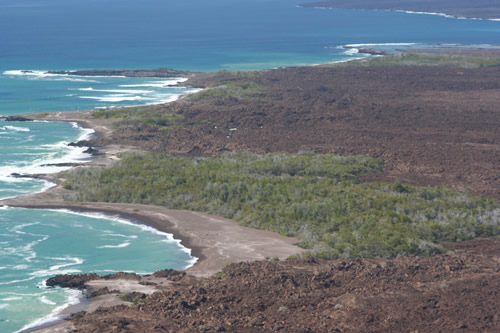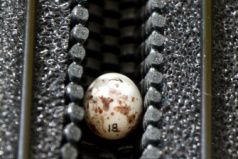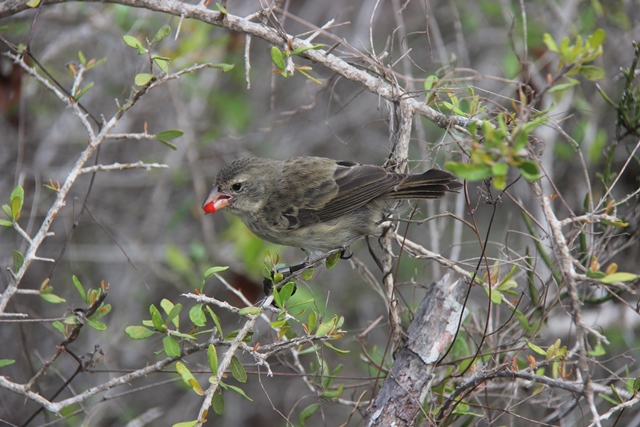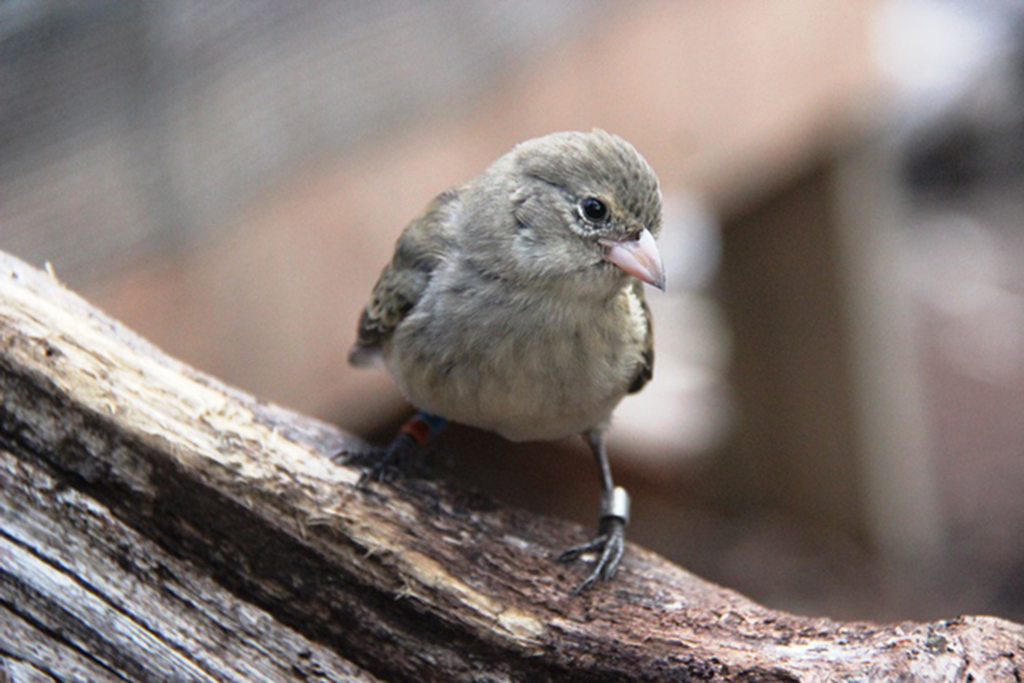World First! Captive-bred Mangrove finches released into natural habitat
With the release of 15 captive bred Critically Endangered Mangrove finches we are delighted to report a world first from SOS Grantee and IUCN Member, The Charles Darwin Foundation (CDF). Today in collaboration with its implementing partners, the Ecuadorian Ministry of Environment through the Galapagos National Park Directorate (GNPD) and San Diego Zoo Global (SDZG), CDF are celebrating the release into the forest habitat on Isabela Island, Galapagos, Ecuador. Time will tell how the birds fare.
According to Francesca Cunninghame (CDF), this is the first time these Critically Endangered birds have been captive reared and released into the wild as part of a new conservation initiative aimed at increasing the wild population so as to safeguard the future of this species. Francesca who is the scientist leading the project, has just returned from Playa Tortuga Negra one of the two small mangrove forests which the finches inhabit. These forests, comprising just 30 hectares (75 acres), represent the entire remaining range of the species.
Francesca explained the significance of this reintroduction effort: “The Mangrove Finch is the most threatened bird species in the Galapagos with an estimated population of only 80 individuals. Based on the results of our post-release monitoring activities, we can conclude that this first season of the program has been a great success and more so if we consider that this year only six chicks fledged in the wild. This season alone we increased mangrove finch fledging success by over 200%. We now have a way to significantly increase the number of fledglings produced each year while methods are developed to control their main threat, the introduced parasitic fly Philornis downsi which causes a very high rate of mortality in nestlings. This important step for the conservation of the mangrove finch is the result of strong team work from all project partners and collaborators.”
During February this year, these finches were collected as eggs or newly-hatched chicks from wild nests at Playa Tortuga Negra. The eggs and chicks were transferred to the Charles Darwin Research Station, on Santa Cruz Island, for artificial incubation and hand-rearing. Once the chicks had learned to feed independently, at approximately 4 weeks old, they were ready to return to their natural habitat. By mid-March, the fledglings, together with a team of researchers and park rangers, returned back to their forest where purpose built pre-release aviaries waited for them amidst the mangroves. Going from captivity to the forest represented a big transition for the young finches. The pre-release aviaries allowed them to adapt to their natural environment. Although a captive diet was still provided for the birds, the aviaries were filled with dead logs, leaf litter, tree branches, native fruits and black mangrove seeds containing caterpillars to encourage them to search for natural food. On 20th April, after four to six weeks since their arrival back to their habitat, the aviary doors were opened for the first time, releasing the seven oldest birds. This was followed by two subsequent releases up until May 6th when all 15 chicks raised in captivity were freely exploring their wild habitat.
Before releasing the finches, tiny transmitters weighing 0.3 grams were attached to each bird, which allowed the field team to monitor their survival and dispersal for up to 22 days. After their release, the fledglings were observed foraging, interacting with their wild counterparts and dispersing over neighboring lava fields. Additionally, the aviaries remained open for several weeks after release and the team maintained a continuous presence observing birds that returned for supplementary food. As the birds became more independent, the frequency of their visits decreased. The field team was still able to locate eight of the 15 chicks up until the time of their departure on the 16th of May. Seven chicks were in the mangrove forest at Playa Tortuga Negra and one was in a patch of mangroves to the north. Although the team lost track of seven finches, evidence suggests that these birds had dispersed out of the immediate mangrove forest habitat, and no mortalities were confirmed.
Time and more fieldwork will tell what becomes of these chicks. With hope we look forward to reporting further developments from Isabela on the future of the Mangrove finch.
The Mangrove Finch project is a bi-institutional initiative between the CDF and the Ecuadorian Ministry of Environment through the GNPD and in collaboration with SDZG. It is funded by SOS - Save Our Species, the International Community Foundation (with a grant awarded by The Leona M. and Harry B. Helmsley Charitable Trust), Durrell Wildlife Conservation Trust and Galapagos Conservancy. Several private individuals have also contributed with financial and in-kind support.









